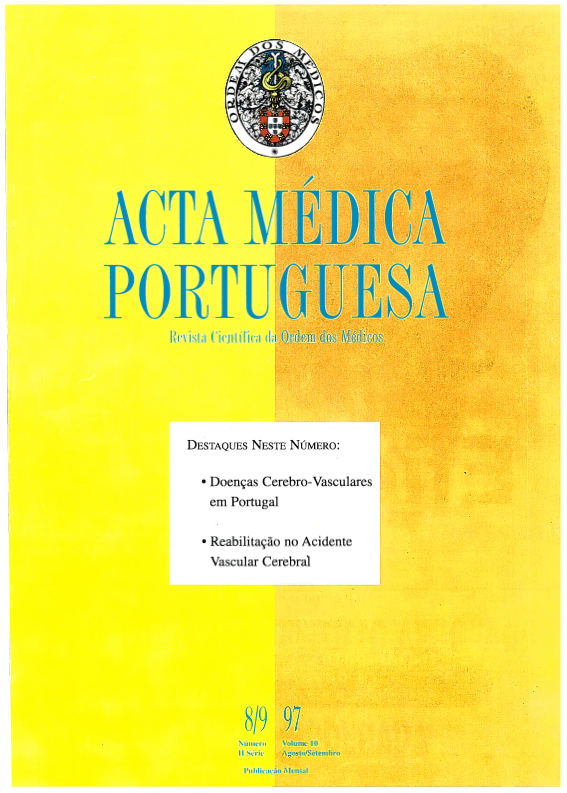Rehabilitation in cerebrovascular stroke: from the hospital to the community.
DOI:
https://doi.org/10.20344/amp.2464Abstract
The field of action for rehabilitation is that of making use of the patient's maximum functional capacity with the purpose of adapting to life in relation to the environment. Rehabilitation must commence immediately, although it may be in different forms from the acute phase to sequelae. It is considered appropriate to call the physiatrist as soon as the neurologic condition has stabilised. A list is made of the measures to be taken for rehabilitation in the acute phase and sequelae, and the composition of the rehabilitation team is described. In what concerns location, where to rehabilitate the patient? The group of ambulatory patients should have their rehabilitation as outpatients. Our experience with house calls is briefly described. The group of patients who cannot walk, those that present an eminently motor condition, with the possibility of being able to walk, should be with their families, with transport provided to health and rehabilitation centres. The second group, with the capacity of walking within a reasonable time, especially if with multiple associated problems such as impaired communication, should be hospitalised in a rehabilitation department. The third group consists of severely handicapped patients, for whom a solution must be found that provides life with a minimum of dignity in centres or homes. From among the measures to be introduced, we point out following: acquisition of transport for patients who must travel, as outpatients, to the department; providing family doctors with complete freedom to refer their patients to rehabilitation centres.Downloads
Downloads
How to Cite
Issue
Section
License
All the articles published in the AMP are open access and comply with the requirements of funding agencies or academic institutions. The AMP is governed by the terms of the Creative Commons ‘Attribution – Non-Commercial Use - (CC-BY-NC)’ license, regarding the use by third parties.
It is the author’s responsibility to obtain approval for the reproduction of figures, tables, etc. from other publications.
Upon acceptance of an article for publication, the authors will be asked to complete the ICMJE “Copyright Liability and Copyright Sharing Statement “(http://www.actamedicaportuguesa.com/info/AMP-NormasPublicacao.pdf) and the “Declaration of Potential Conflicts of Interest” (http:// www.icmje.org/conflicts-of-interest). An e-mail will be sent to the corresponding author to acknowledge receipt of the manuscript.
After publication, the authors are authorised to make their articles available in repositories of their institutions of origin, as long as they always mention where they were published and according to the Creative Commons license.









